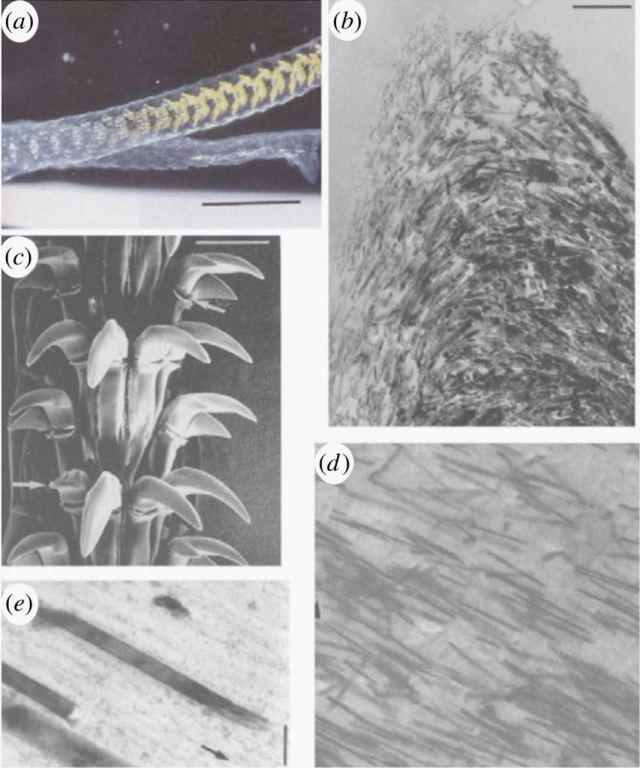Limpet Teeth: The New World's Strongest Material
So you'd like to know what naturally occurring inorganic material is tougher than spider web, yes? This week Professor Asa Barber of the University of Portsmouth's School of Engineering spoke up on the project. Also leading the project, Barber suggested, "Until now we thought that spider silk was the strongest biological material because of its super-strength and potential applications in everything from bullet-proof vests to computer electronics." Until now, of course. Their new findings suggest that the teeth of the snail-like Limpet is stronger than any material they've found before.
The material these teeth are laced with goethite fibers. Geothite is an iron uniquely bearing diaspore hydroxide minerals (α-FeO(OH)). Before this research, it was thought that geothite only appeared in soils, in swampy areas, on cave floors, and in small bodies of water.
Geothite has also been discovered by NASA's Spirit rover on Mars in the Gusev formation.
According to Barber, teeth of the limpet have geothite forming in them as the creature grows.
"Limpets need high strength teeth to rasp over rock surfaces and remove algae for feeding when the tide is in," said Barber.
"We discovered that the fibres of goethite are just the right size to make up a resilient composite structure."

Above: Scanning electron micrographs showing (a) the limpet tooth prior to FIB milling, (b) FIB sectioning and attachment of the limpet tooth cusp to an AFM probe and (c) further FIB milling to thin the sample towards a 'dog-bone' geometry.
The structures the team is finding – not necessarily the teeth themselves – show great potential for being replicated by much larger applications.
"The fibrous structures found in limpet teeth could be mimicked," said Barber, "and used in high-performance engineering applications such as Formula 1 racing cars, the hulls of boats, and aircraft structures."

Above you're seeing one Figure from the paper in which these findings have been published. From the paper:
(a) Optical image of the tongue-like radula containing bands of teeth along a length of many centimetres. (b) Scanning electron micrograph of the teeth groupings with each tooth length approximately 100 μm. High-magnification electron microscopy images of the tooth cusp show (c) the changing orientation of the nanofibrous goethite in the chitin matrix(d) the high anisotropy of the composite at the anterior and posterior edges owing to alignment of the goethite, note the mineral fibre length of approx. 3 μm, with (e) close-up of the tooth indicating the distinct phases of the goethite 'reinforcing fibre' and the chitin 'matrix' highlighting the structural resemblance to a fibre-reinforced composite material with an average fibre diameter of approx. 20 nm.
The entire paper "Extreme strength observed in limpet teeth" can be viewed in The Royal Society Publishing's Interface from April 2015, Volume 12, Issue 105. Authored by Asa H. Barber, Dun Lu, Nicola M. Pugno – DOI: 10.1098/rsif.2014.1326 Published 18 February 2015.
Here's some music to listen to while you're thinking about how tough this snail is.
